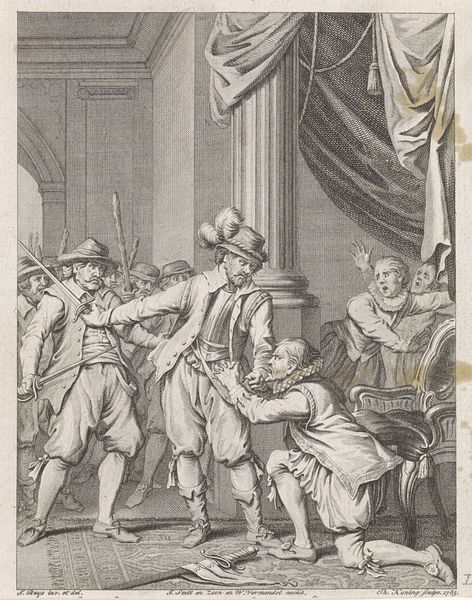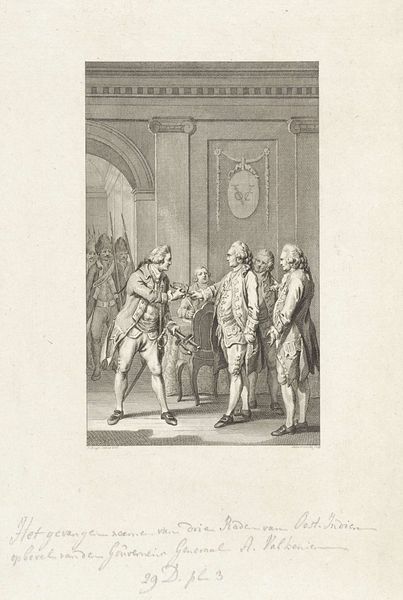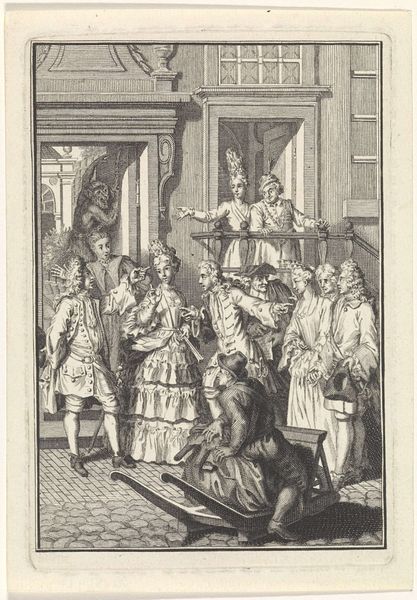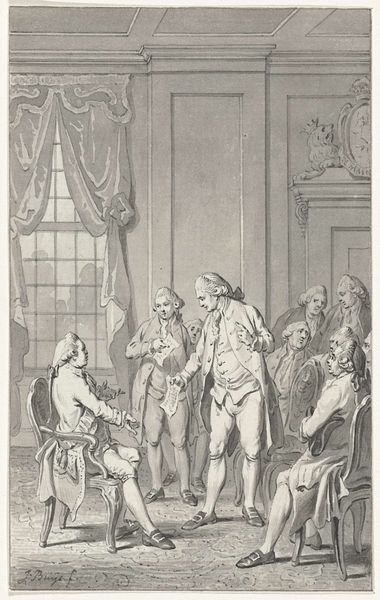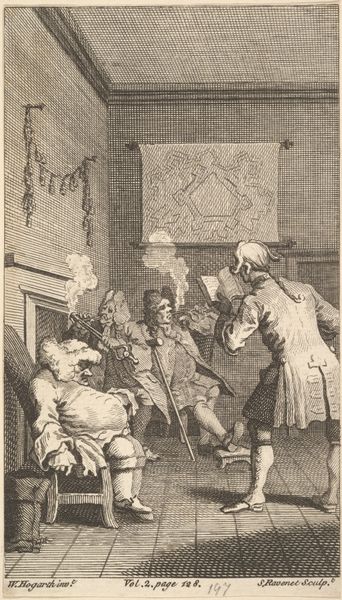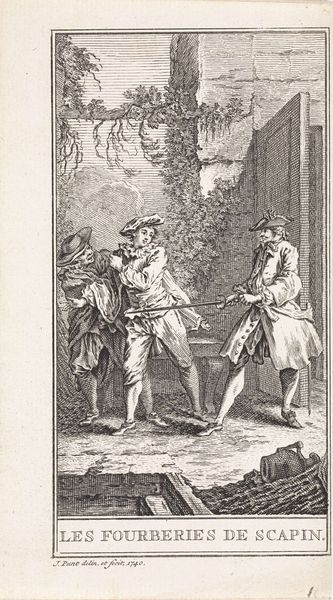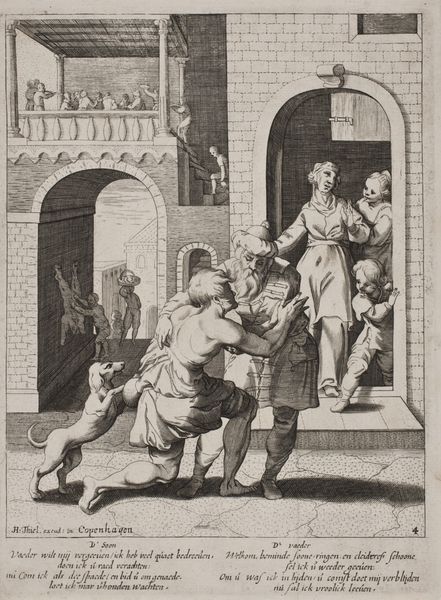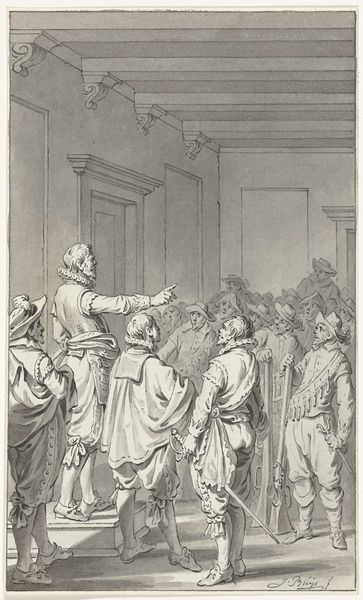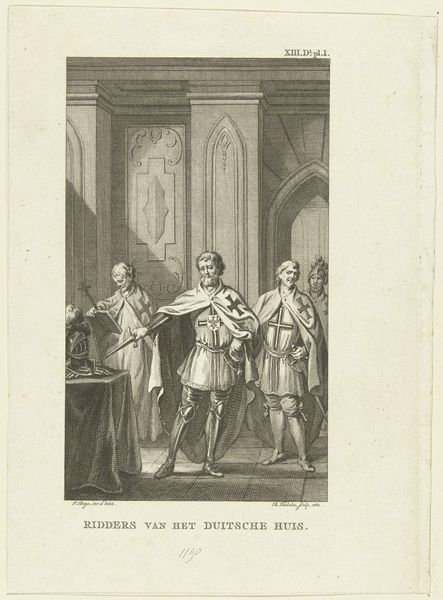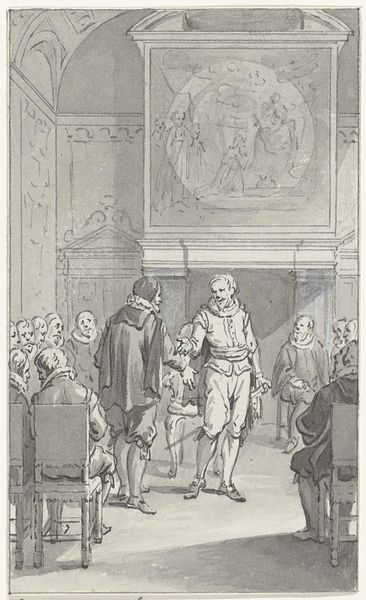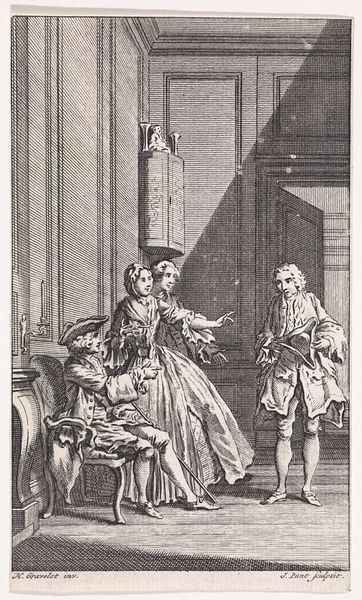
drawing, print, engraving
#
drawing
#
narrative-art
#
baroque
# print
#
pen illustration
#
genre-painting
#
history-painting
#
engraving
Dimensions: height 130 mm, width 78 mm
Copyright: Rijks Museum: Open Domain
Editor: We are looking at “Thomas Jones ontvangt een brief” created around 1749. The Baroque engraving, currently at the Rijksmuseum, captures a narrative moment. What strikes you most about it? Curator: Initially, the stark linearity and tonal contrast, executed with remarkable precision for its time. The composition divides the space, directing the eye through a sequence of carefully articulated planes, further emphasized by the architectural rendering and dramatic lighting. Editor: Speaking of execution, look at the use of engraving techniques. The labor-intensive process surely influenced both the content and dissemination. The subject matter and the printing production underline social realities. Curator: Indeed, the visible texture created by the meticulous application of cross-hatching, stippling, and linear strokes generates a subtle dynamic between foreground and background, amplifying the sense of depth and emotional intensity. One should consider its use as a method for wide circulation of both narrative art and social commentary. Editor: Let’s consider that social element a bit more closely. It makes me wonder about literacy and access to information. Who could read the letter? How was it distributed? I feel we are touching on critical considerations surrounding 18th-century life. Curator: Certainly, the letter itself functions as a symbolic axis. The converging gazes intensify this reading, prompting the viewer to decipher this narrative—to engage actively in its structural unfolding. Editor: So, from the material reality of ink on paper to the construction of the narrative and its socio-historical implications, it's remarkable. These elements of production and reception are quite enmeshed in the artwork's enduring appeal. Curator: Yes, each of these brings us back to how the artwork still presents a fascinating study of formal aesthetics in constant dialog with historical interpretation.
Comments
No comments
Be the first to comment and join the conversation on the ultimate creative platform.
